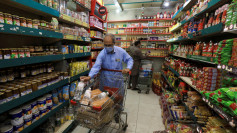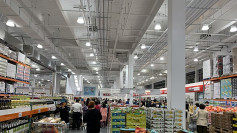Japan's consumer confidence index increased to 33.8 in February - the strongest reading since February last year.
All of the main sub-indexes improved: overall livelihood was up 4.1 points to 36.3, income growth was up 1.9 points to 35.4. willingness to buy durable goods was up 4.5 points to 36.1 and employment perceptions were up 6.4 points to 27.5, according to data from the Cabinet Office Thursday.
The reading logged the second sharpest increase on record, following a record 4.4-point gain in June last year, a month after the country's first state of emergency over the coronavirus, which was declared nationwide, was fully lifted.
A government official said the decisive factor affecting consumer sentiment was likely the number of virus cases rather than whether or not the country is under the emergency state.
"The average figure of daily new cases during this survey period was about 1,400, compared with some 6,000 in January, so that uplifted consumer sentiment," the official added. The latest survey was conducted between Feb. 6 and 22.
The state of emergency was first declared in April, with people being requested to stay home and nonessential businesses asked to suspend operations.
Amid a resurgence of infections starting in November, a second virus emergency was declared Jan. 7 for the Tokyo metropolitan region with less comprehensive measures compared to the initial emergency declaration, Kyodo News Agency reported Thursday.
After being expanded to 11 prefectures, it has since been scaled down and now only covers the Tokyo metropolitan region.
It was scheduled to end Sunday, but Prime Minister Yoshihide Suga has said it should be extended by about two weeks amid concerns about the recent slowing down in the decline of infections.
The Cabinet Office upgraded its basic assessment for the first time in five months, saying consumer sentiment has "remained in a severe situation, but shown signs of recovery." It said the previous month that sentiment was "weakening."
The survey covered 8,400 households, including 2,085 single-member households, with valid responses received from 7,595, or 90.4%.






